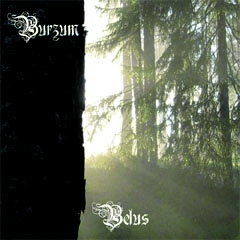Burzum - Belus
Review: Complex enough by its method to exceed linear thinking, the latest from Burzum appropriates its aesthetic from the droning black metal of the past generation, but as it lacks the original organizing principle that propelled this one-man band to great works, it ends up being highly competent aesthetic embellishment on deconstructions of the original Burzum idea. Where it once created, it now destroys.
Starting with a re-iteration of the theme from "Baldur's Dod" after a brief introduction that sounds like a satire of Einsturezende Neubauten, the album launches into three songs that resemble a Ukrainian or Russian droning black metal band imitating Burzum. In doing so, they reveal how much the droning black metal style borrows from the Swedish melodic death metal of the previous generation, because when the music increases a level of complexity as Burzum does, it sounds more like Unanimated or At the Gates with black metal rhythms. Where previous albums were through-composed with longer melodic phrases, this album comprises plays on harmony, embellished with trills, fills and decorations.
With the exception of "Kaimadalthas Nedstigning" and "Sverddans" which sound like recycled material from the pre-Burzum era, the latter half of the album drones in minute variations on monotonous themes, producing a sense of profoundly directionless pandering -- like modern society and exoteric Christianity. Nothing here is badly composed but two cliches must be addressed: the sum of the parts does not form a greater whole, and the album has become an end in itself instead of a means to an end, which is the expression of some immortal idea relevant to life. As a result, this has the aesthetic power of wallpaper on which all of the demons are drawn as flowers.

